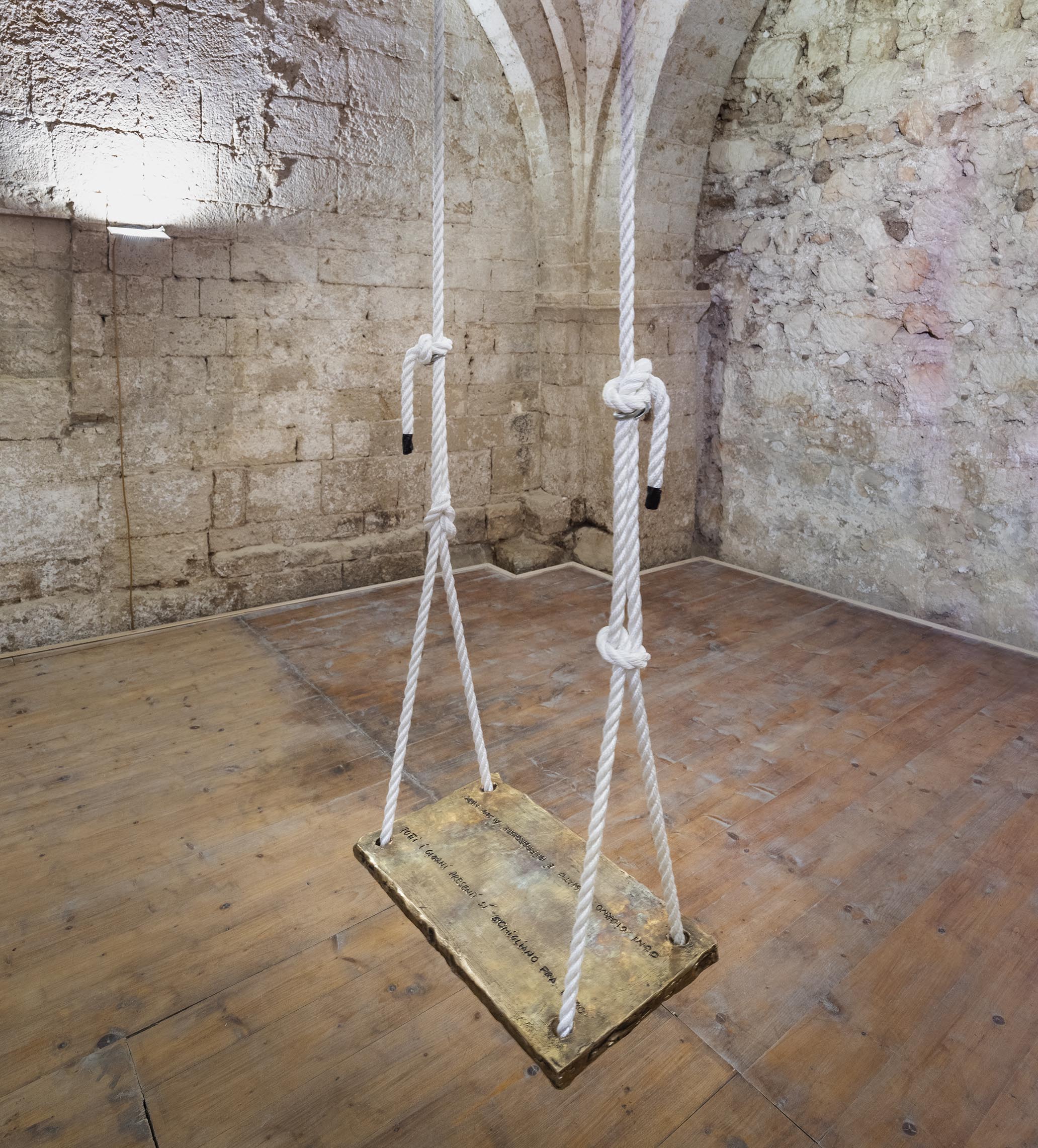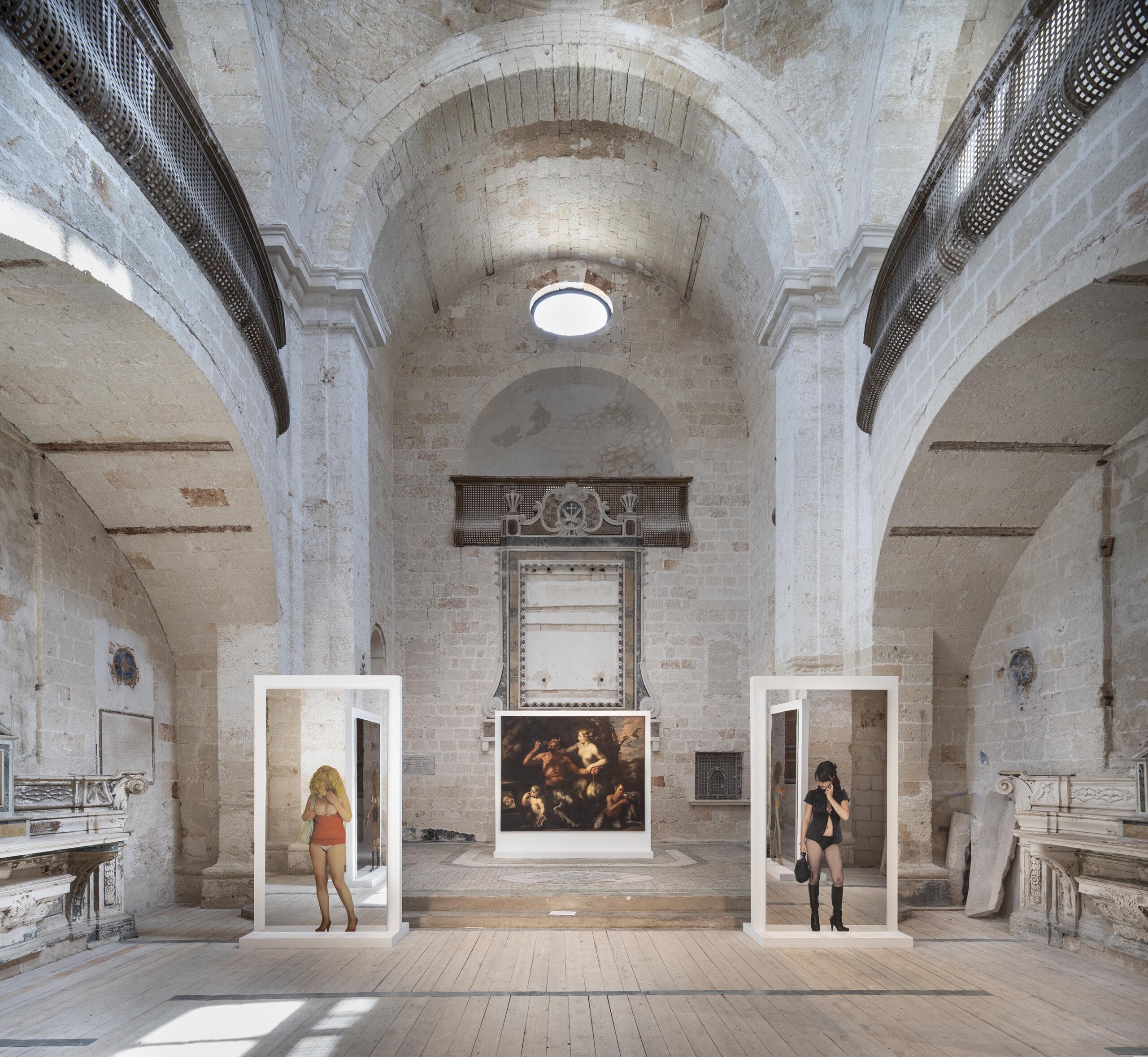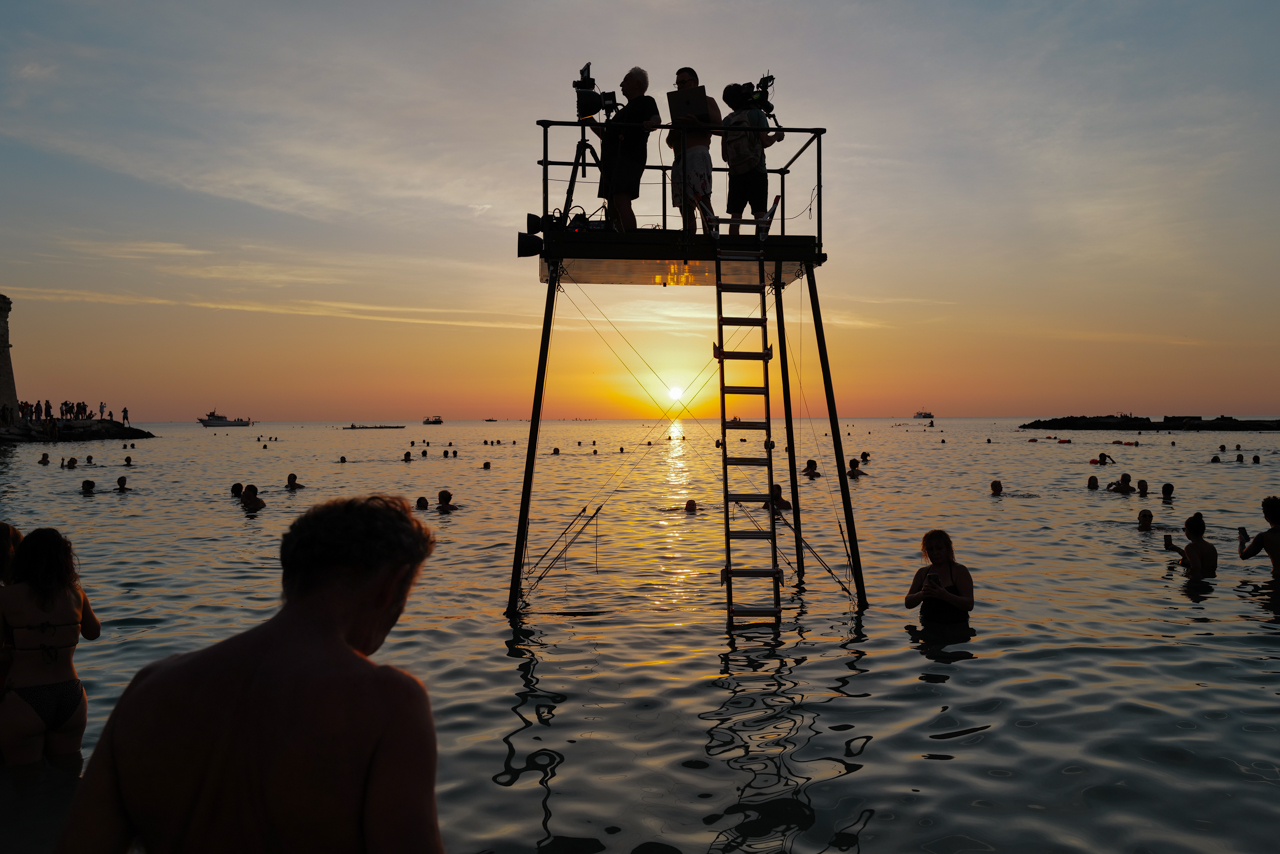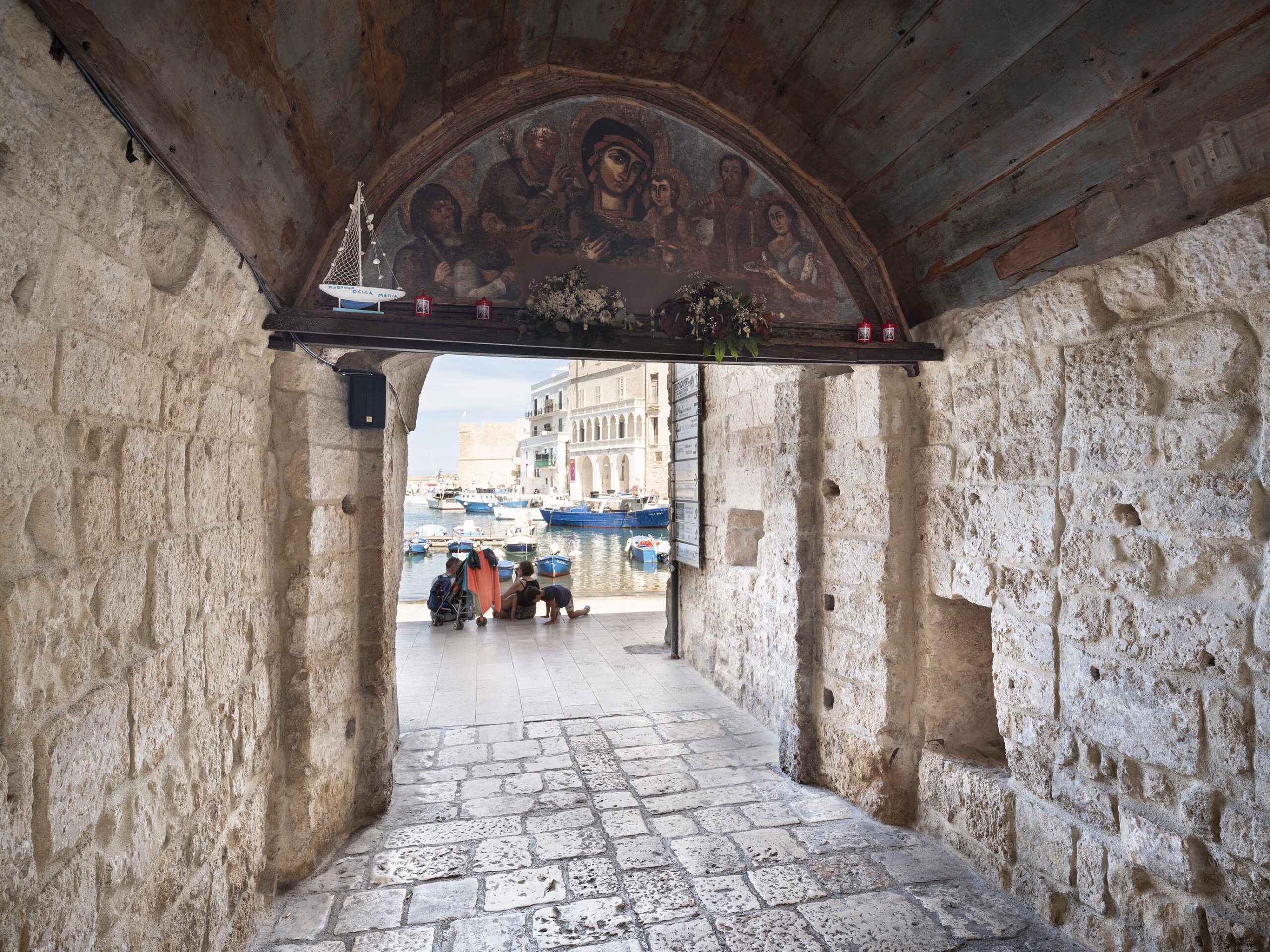Vincenzo de Bellis: from the Walker Art Center to Art Basel via Monopoli
Vincenzo de Bellis
On the occasion of the second edition of Italics, an annual event organised in emblematic locations in Italy by a consortium of Italian galleries, I met Vincenzo De Bellis curator of the exhibition “Panorama” and recently appointed director of fairs and exhibition platforms at Art Basel.
From Procida to Monopoli, the first edition last year was created on the run, instead, for the second edition you are on your home turf, and that has posed new challenges.
Following on from the first edition which was a success, but also extremely demanding, this year the challenge was to do better. Procida has a magic that few places have, and repeating that atmosphere was by no means easy. When we considered organising the second edition in Puglia, the challenge paradoxically became even greater because it is the region where I was born. This year it was very positive to see that the enthusiasm and ambition of the gallery owners was much more apparent, compared to the previous edition.
I imagine it is difficult in such a large exhibition, where there are so many different venues and works ranging from ancient, modern and contemporary, to say which of the “dialogues” between artists provided you with the most satisfaction.
I was particularly pleased by the success of a room that I had initially not thought of, the Sala delle Armi at the Castello Carlo V, which features works by Marisa Merz, Francesco Arena and Lorenzo Lippi. The works were supposed to be in three different locations and then due to a series of circumstances could not be installed in any of these spaces, so I came up with the idea of exhibiting them together. The Sala delle Armi thus links ancient and modern and the contemporary acting as a bridge, and this symbolically represents the essence of Italics. I also find Michelangelo Pistoletto‘s installation of mirror sculptures in dialogue with Cesare Fracanzano‘s 17th-century painting “La Famiglia del Satiro” In curch Santi Giuseppe e Anna to be truly disruptive.

One of the most successful exhibition venues, in my opinion, is also the Complesso di San Leonardo, not only for the spectacular nature of the place but in particular the room where Adelita Husni-Bey’s works are exhibited. She is presenting the result of the performance she has been working on since 2016, “Encounters on Pain”, in dialogue with Franca Maranò’s medieval paintings “Mental Dresses” (1977).
There are two main nuclei of “Panorama“, Monopoli: Palazzo Martinelli and the San Leonardo complex, which represent the “Polo Museale” of the exhibition. The two spaces present two different curatorial modalities: Palazzo Martinelli is made up only of dialogues, while San Leonardo is almost entirely composed of solo shows with the exception of Adelita Husni-Bey and Franca Maranò who share one space, which is nevertheless a room with a theme: the relationship between body and mind. Franca Maranò is a little-known artist from Puglia, born in 1920, and this room was initially supposed to be dedicated solely to her. Later, when talking to Adelita about her work, I realised that the latter artist’s works on paper, the result of her encounters with pain, would find a perfect location in this place.
In Palazzo Martinelli, I ignited artist dialogues by creating six thematic rooms, linked to the overall theme of the exhibition, in particular the room dedicated to the sculpture of Nicola Samorì and the works of Mimmo Rotella and Alighiero Boetti, which deals with the stratification of time. Boetti‘s “Copertine“(1984) is a stratification of one year, Rotella‘s “Leda with the Swan” (1987) is an undefined stratification, while Francesco Laurana (1472) and Nicola Samorì (2022) put in relation represent a stratification of six centuries of history.
There is another exhibition venue that I would like to mention because I find it emblematic of this exhibition, and that is the Church of San Salvatore featuring Stefano Arienti and Mario Merz. I asked Stefano to do a site-specific work, and he responded with his work comprising industrial tarpaulins depicting “Santi in Giardino”. When I saw it, I immediately thought of Mario Merz‘s “La casa abbandonata” (1977 – 83) and I proposed putting the two works in dialogue, and the result is that the two works reinforce each other.

“Panorama” Monopoli opened its doors with the dawn bath performance by Massimo Vitali: I think this was an explicit and direct way of involving all the inhabitants of Monopoli and making them feel like protagonists of the event.
There are two strong traditions in Monopoli: the first is the festival dedicated to the town’s saint, the Madonna della Madia, which is celebrated on 15 August. Popular belief says that if you swim in the sea on 15 August, the Madonna takes your soul with her and therefore, no one takes a swim. The second tradition, on the other hand, is to take a swim at dawn on 1 September because it is said that if you bathe on that day, you will not get sick for the whole year. Massimo Vitali decided to take one of his shots on this occasion.

Let’s also talk a little about the market, how do collectors respond? How was it last year and how has it changed this year?
Last year, there were several collectors and a third of the works were sold in situ, this year the presence of collectors has quadrupled, and, above all, many have also arrived from abroad.
Let’s talk a bit about you, you have just had an important assignment from Art Basel. What exactly will your role be?
Let’s say, to simplify, that I will be supporting the fair’s Global Director Marc Spiegler, who I’m reporting to, in overseeing the operational delivery of our four shows. Each of the fair directors will continue to lead their respective show, but I will be there for support and coordination. Our four fairs are in great hands and great shape but as leaders in the field we, all together, want to be vigilant and ready to address the new inputs that our world, driven by the artists, presents. The other equally exciting part of the role comprises the development of new exhibition formats complementary to our shows, that allow us to build our presence in new markets and grow our audiences.

Art Basel, after discontinuing the Basel Cities initiative, has launched activities related to Tokyo and Singapore Art Weekend: how do these activities relate to the main fair?
Our support of Art Week Tokyo and SEA Focus in Singapore are two examples of initiatives that carry on the main objective of Art Basel which is to provide its galleries with new market opportunities. In both instances Art Basel lends its support by providing industry expertise and access to our global network. Within my new role, and together with the team, we’ll work on these and other projects with the aim of systematising and organising these initiatives.
Post Covid, now that people are much more reluctant to travel long distances and China is still closed to tourism, do you think fairs like Art Basel Hong Kong or a fair like Paris + are more regional fairs instead of international ones?
The pandemic accelerated a process that already existed. When I finished the last fair as director of Miart I said that fairs in my opinion are of two types: global fairs like Art Basel and Frieze and local fairs that work very well because they are based on a strong community concept.
Having four venues and four different contexts we believe that Art Basel can reflect on the diversity of each context and highlight them. The overall goal is always to promote art and show how art and culture play a role in our lives and impact the cities where we live.
With what expectations is Art Basel opening Paris +?
Paris+ par Art Basel is a crucial project for us. Paris today has a unique standing as the art capital of Europe. The first two editions will take place at the Grand Palais Éphémère, which is our temporary home while Grand Palais is under restoration. We were only able to accommodate 156 galleries in our first year. In 2024, however, we will return to the Grand Palais and make the leap in terms of numbers.
At this stage let me give a big shout out to the Paris + team, led by the Director Clément Delepine. They are working at an incredible pace to deliver a fantastic project, which will involve the city well beyond the fair per se. I can’t wait to see it finally come to fruition!




